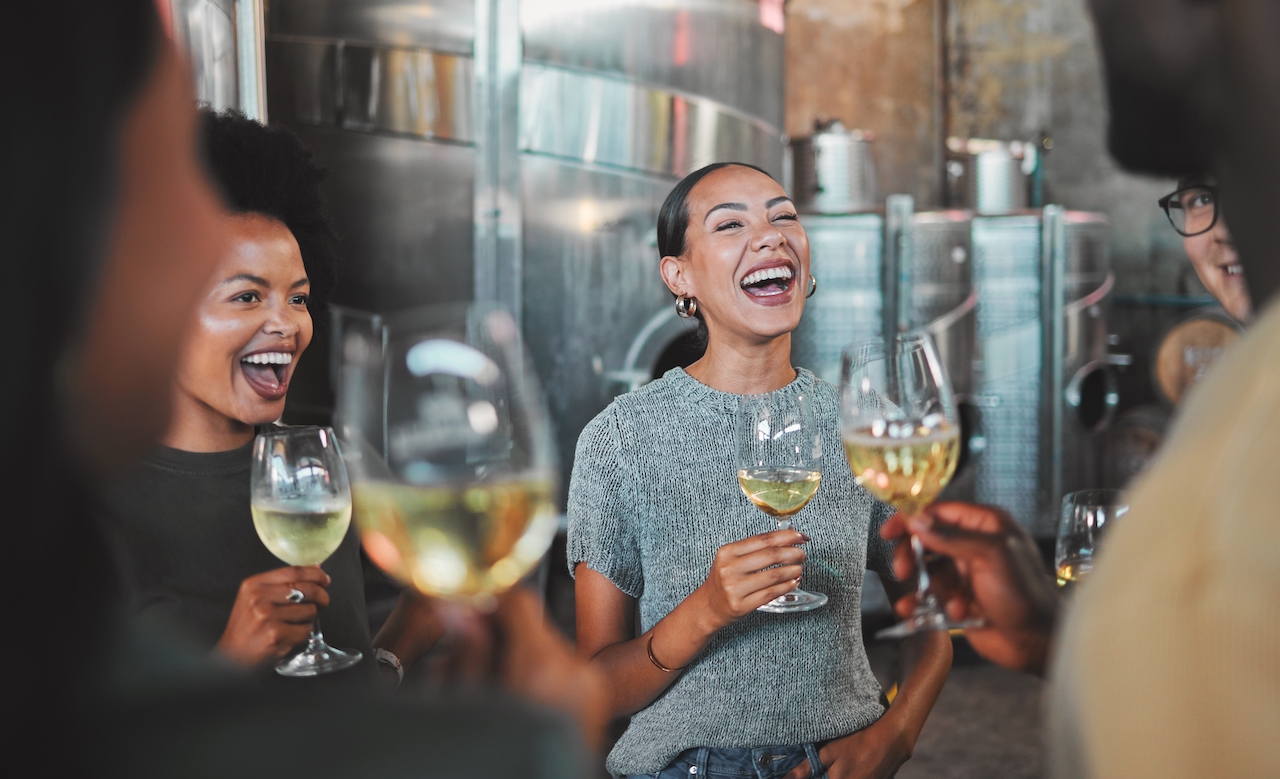
Stay Informed
Get the latest news, trends, and industry insights.
As we prepare to step into 2025, the wine industry landscape is more dynamic than ever. With this in mind, we’re predicting an array of trends that will reshape the way wineries approach their marketing and positioning efforts. From embracing technological advancements to adapting to evolving consumer preferences and meeting sustainability initiatives, wineries are currently at an exciting crossroads of tradition and innovation. In this era of rapid change, adaptability and a keen understanding of emerging trends will be key for wineries looking to thrive in the new year. Here are six trends in the wine industry to keep in mind for 2025.
1. The No-Alcohol or Low-Alcohol Wine Craze Continues
The sober-curious movement seems like it’s here to stay. A growing fascination with no-alcohol or low-alcohol wines has evolved into a significant trend that shows no signs of slowing down in the new year. As consumer preferences have shifted towards healthier lifestyles and more mindful consumption, especially amongst Millennials and Gen Z, demand for alcohol-free and low-alcohol wine options has risen. These consumers are seeking more diversity without compromising on taste or quality.
Wineries may consider adapting to this burgeoning market segment by enhancing the quality and variety of their no- or low-alcohol wines. Those who aren’t quite ready to change their portfolio with new SKUs should consider fine-tuning their marketing and messaging to highlight the wines in their portfolio that lean towards this trend. This approach could include offering a package of lower-alcohol wine options and showcasing them in an integrated marketing campaign. Additionally, wineries could partner with health-oriented social media influencers like nutritionists, chefs, or yoga instructors to amplify their messaging around wines to fit a healthier lifestyle.
Discover more strategies to successfully market wine to Gen Z and Millennials.
2. Interest in Wines from Unique Growing Areas
On the heels of a few struggling vintages in traditional wine regions like Burgundy, wine prices of classically recognized wines have skyrocketed. Consequently, consumers are ready to venture off the beaten path to wine regions offering more economically priced bottles. For example, lovers of Burgundy may opt for Chardonnay from Jura instead. Or Napa Cabernet enthusiasts can head further south to the robust reds of Paso Robles in Central Coast California. Plus, wines from countries like Turkey, Armenia, Georgia, and Greece are all getting more time to shine.
Wineries can lean into this trend by focusing on storytelling to highlight what makes their vineyards and wine regions unique. Alternatively, they can promote wineries in their portfolio that are atypical for their region. Regardless of location, there’s bound to be an authentic story to connect with consumers looking for an unconventional wine experience.
3. Crossover Creations: Embracing Wine Cocktails
Wineries can capitalize on the wine cocktail trend in 2025 by using them as a strategic avenue to promote their wines, expand their consumer base, and enhance their overall business. Incorporating wines into innovative cocktail recipes can showcase the versatility of wines while appealing to a broader audience beyond traditional wine enthusiasts. Developing wine-based cocktails allows wineries to engage with consumers in an exciting new way. Considering that 35% of consumers between 21 and 29 years old drink alcohol, but not wine, wine cocktails are an ideal way to generate interest from younger consumers.
Wineries should collaborate with mixologists to develop enticing wine cocktail recipes they can feature in blog posts on their websites and social media. They can leverage social media even further by partnering with cocktail influencers or collaborating with local restaurants to develop a signature cocktail featuring their wine. Delicious wine cocktail recipes make for a captivating pitch to lifestyle media outlets, especially during the holiday season.
Learn more: 6 Wine Marketing Tactics That Actually Work
4. Regenerative Agriculture
The wine industry continued to level up its sustainability efforts this year, and by the looks of it, regenerative agriculture is here to stay. Embracing this trend in 2025 enables wineries to minimize environmental impact, contribute positively to local ecosystems, and captivate Gen Z and Millennials consumers driven by marketing and branding related to sustainability.
By employing techniques such as cover cropping, composting, and biodiversity preservation, wineries can improve soil fertility, sequester carbon, reduce water usage, and regenerate soil health. Ultimately, regenerative agriculture leads to healthier vineyards, higher-quality grapes, and even better wine. All while providing an opportunity for captivating storytelling in alignment with consumer values.
5. The Rise of AI
Generative AI is on the rise, and savvy wine brands will use AI to streamline marketing, customer service, and more in 2025. When it comes to wine marketing and communications, it’s critical to find the balance between using the latest technology and keeping it real. It’s best to think of AI as a virtual assistant who can help brainstorm ideas, write first drafts of content, or give design, image, or content suggestions. But it’s up to the humans behind the brand to create a content strategy, edit and refine written content to ensure it’s on brand, and interact with online audiences in an authentic way.
Remember, 62% of consumers are less likely to trust content if they know an AI application created it. So whether wineries use customer service bots to engage website visitors or ChatGPT to draft their social media content, it’s always a good idea to pepper in genuine interaction and language to maintain a connection with your audience.
6. Digital Engagement Is Here to Stay
In 2025, websites will be as crucial as tasting rooms, and putting off building a community on social media just won’t fly anymore. The most successful wine brands will integrate authenticity across all digital platforms, creating a streamlined user experience that bridges real-life interaction and online engagement. That said, companies should always base their platform selection on ROI. If a social platform isn’t bringing value, it’s not worth the time investment.
Instead, wineries should focus on mastering a few key platforms to give them the time to understand and engage with their audience, experiment with high-quality content, and stay on top of trends and changing algorithms. It’s worth noting that 34% of users surveyed by Hootsuite said that brands too focused on self-promotion negatively impacted how audiences viewed them. This self-serving impression can be avoided by focusing on storytelling that entertains the audience, captivates users on social media platforms, and moves them to the top of the marketing funnel.
Stay Ahead of the Trends
Not only do we stay on top of wine industry trends at The Brand Leader, but we strategically identify the trends that align with your goals and have the potential to take your brand to the next level. To learn more about how we develop 360° integrated marketing campaigns for wine and spirits brands around the world, contact us.
Check out some of our wine and spirits work for our clients.
Stay Informed




